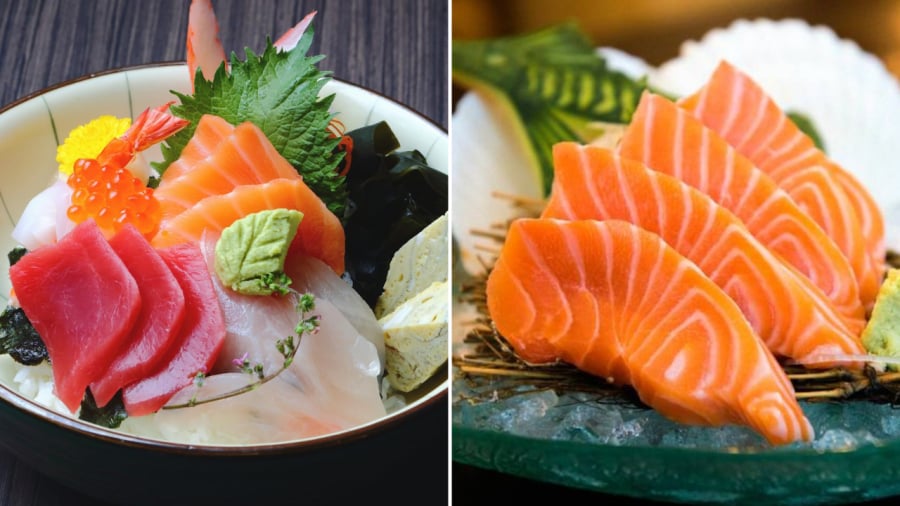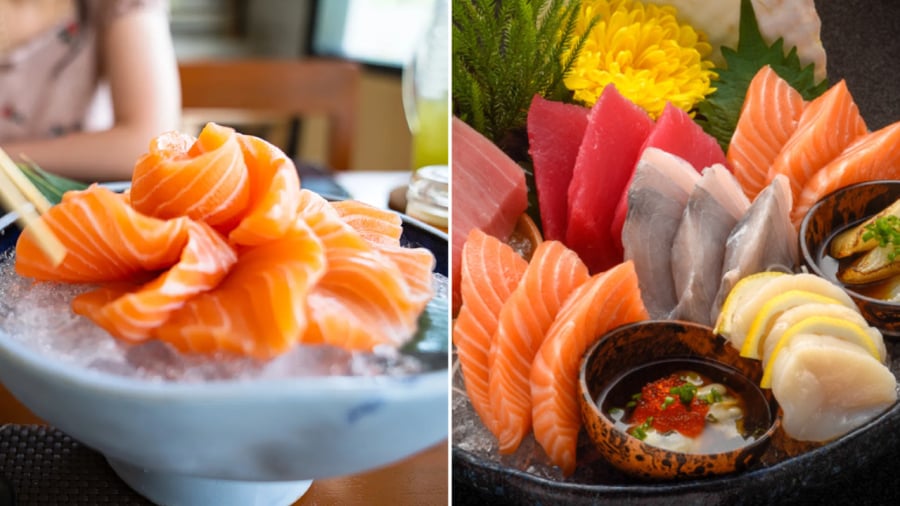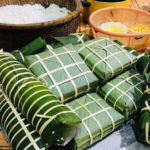Raw fish dishes are a staple of Japanese cuisine. Whether it’s street food or fine dining, you’ll easily find such raw delicacies. Raw fish is an integral part of the culinary culture of the Land of the Rising Sun.
Why do the Japanese eat raw fish without fear of worm infections?
Japan is an island nation surrounded by the sea, with varying ocean currents throughout the year. It boasts a rich and abundant supply of seafood. The Japanese consume fish five times more than other countries worldwide.
The habit of eating raw fish is believed to have originated in the 8th century when fishermen would catch seafood daily and prepare it on their boats before returning to shore. This method allowed them to savor the freshness of the seafood without elaborate cooking methods.
Over time, this practice evolved into what we now know as sushi – a combination of fresh seafood with rice, wrapped in seaweed.

Raw fish is indispensable in Japanese cuisine.
Raw fish is considered a nutritious food, providing abundant omega-3 fatty acids and other essential nutrients to the body, improving cardiovascular health, boosting immunity, and reducing stress.
The Japanese are meticulous about storing and preparing raw dishes. After being caught, the fish is quickly frozen at a temperature of minus 40 degrees Celsius. Upon reaching the shore, the fish undergoes marination and thorough cleaning.
Additionally, when consuming raw fish, strong-flavored condiments like soy sauce and wasabi are used to enhance the flavor and help prevent pathogens.
In 2016, the country recorded only 124 cases of parasitic infections, a relatively low number considering its population of over 120 million.
Principles of Japanese Raw Fish Consumption
To ensure safety when eating raw food, the Japanese have stringent rules from the fishing stage to the preparation and consumption.
The food is carefully selected before use, with a preference for seafood caught in coastal areas, known for their superior flavor and nutritional profile.
Fish must be frozen to prevent bacterial and parasitic growth.

Fish is carefully stored and prepared before serving.
Most establishments maintain refrigerators at temperatures between 1-5 degrees Celsius. Professional sushi chefs take it a notch higher by setting their refrigerators at minus 2 degrees Celsius.
Furthermore, they employ traditional processing methods to minimize health risks associated with consuming raw food. For instance, when preparing salmon, chefs use a special type of vinegar to eliminate harmful microorganisms.
When eating sushi and sashimi, two indispensable condiments are soy sauce and wasabi. These condiments not only enhance the flavor but also help detoxify, inhibit, and reduce bacterial and parasitic accumulation. Raw fish is typically dipped in soy sauce and wasabi and accompanied by perilla, mint, and ginger, which aid digestion.
8 Common Mistakes People Make with Cutting Boards
Are you using your cutting board correctly? Many Vietnamese households rely on cutting boards in their kitchen, but not everyone knows how to use them properly, especially when it comes to wooden cutting boards. Check out these 8 mistakes to avoid when using a cutting board to ensure both hygiene and safety for everyone in your family.
Is Refrigerated Leftovers Linked to an Increased Risk of Cancer?
Dr. Lam Van Man, Head of Research, Development and Technology Transfer Department of the Institute of Safety Food, has warned of the risk of food poisoning when reheating leftovers from the refrigerator. But what should we be aware of when it comes to the possibility of these leftovers causing cancer? Here, we explore what the experts have to say on the matter and offer some tips for safe eating.
Preserving Leftover Food from the Tet Holiday
With the beginning of the Lunar New Year, many households are stocking up on food to celebrate the festive occasion. While keeping food in the refrigerator is convenient, it can also be harmful to users if not done correctly. We have compiled a few tips to help ensure food remains fresh and safe to consume during Tet.



































